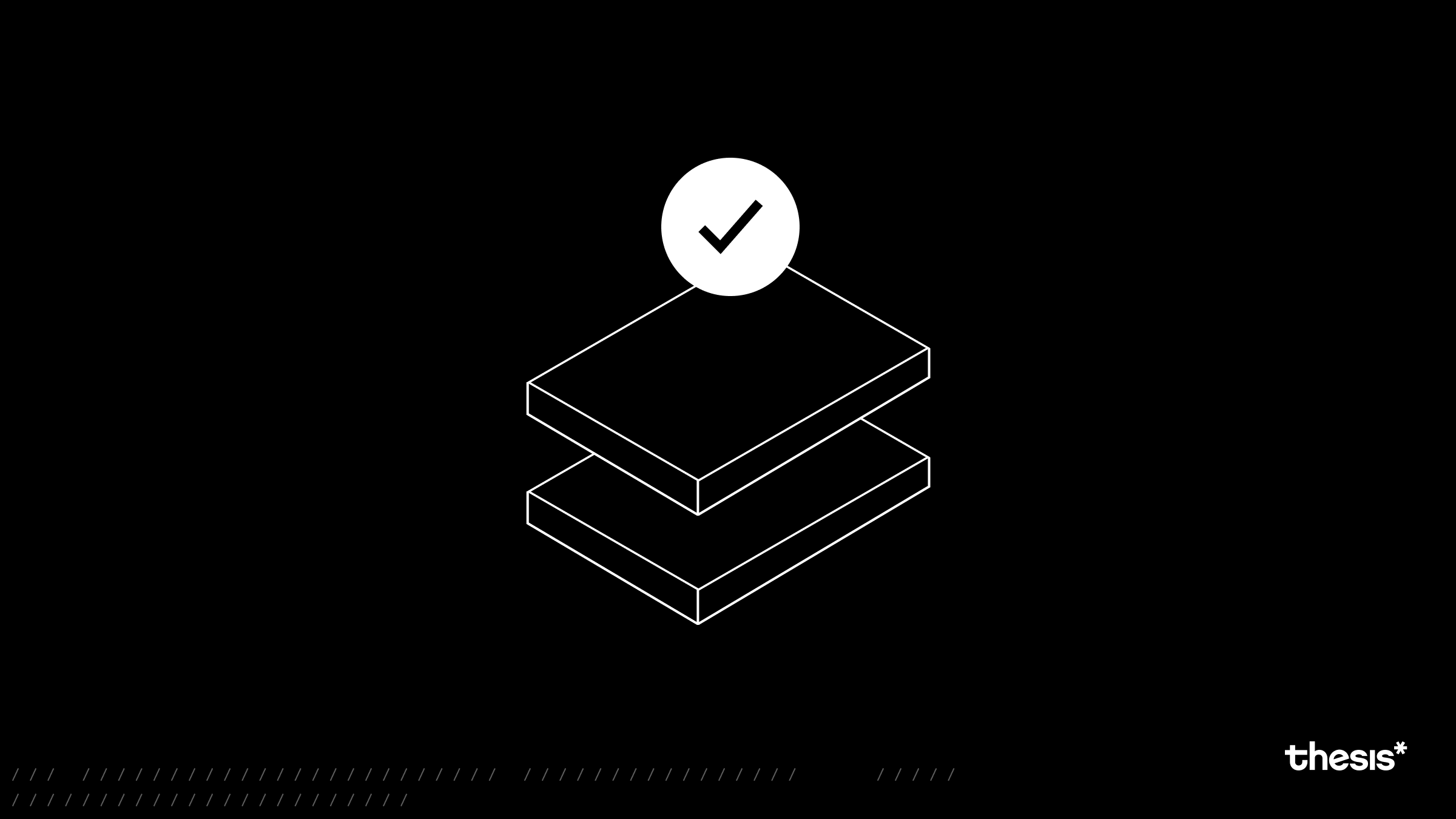Bitcoin has no truly robust dApps. Yes, there is a set of earnest developers pioneering UTXO-based Metaprotocols directly on Bitcoin, but relatively few of these have seen the outlandish success of the Ordinals protocol as a whole.
Though Metaprotocols prove it’s technically possible to develop with the UTXO directly atop Bitcoin, the current batch calls into question the feasibility of such efforts—bound by Bitcoin’s rigid bytecode structure, these Metaprotocols at best mimic, or fall short of adapting existing offerings.
On the other hand, over a decade of development led to the surge of alternative Layer 1 (alt-L1) networks, such as Solana, Aptos, and SUI, spurred by the need to optimize performance. However, these networks create fragmented sets of users and rely on massive, unsustainable incentives.
So does it make sense for dApp developers seeking to tap directly into Bitcoin’s deep liquidity and user base to build directly on Bitcoin or an adjacent L1? For those interested in contributing to a robust Bitcoin dApp ecosystem, Bitcoin L2s have much more to offer.
Bitcoin Dominates Mindshare
Bitcoin already commands dominance in terms of social validation and mindshare—when people think of cryptocurrency or blockchain technology, Bitcoin is generally the first place they go. This is indicated by Bitcoin’s sustained lead in global Google search volume—it’s practically a household name. When search trends for broader crypto terms pick up, Bitcoin always dominates by an order of magnitude.
Name recognition and mindshare aren’t the only places Bitcoin dominates. Since numerous cryptocurrencies and protocols emerged amid the DeFi summer renaissance of 2020-2021, and even with industry-wide of the implosion of FTX, Bitcoin’s sustained growth trend has put it back in the 50 percent market share range. This emphasizes Bitcoin’s resilience in the presence of a volatile and increasingly competitive landscape.
The evidence is clear—over time, no matter what events take place or the broader state of the market, Bitcoin remains king.
Adjusting for Consensus
The consensus mechanisms of existing L2s proposed to enhance Bitcoin’s scalability and functionality vary. However, differing approaches breed fragmentation, which makes building cumbersome for Bitcoin developers. As if to exemplify this, Stacks is working to radically change its L2s consensus mechanism with the Nakamoto hard fork, which will stray from a method that ties network operations directly to Bitcoin transactions.
For developers, it can be difficult to adjust dApps for major network changes such as a consensus overhaul, whereas EVM-compatible Bitcoin L2 protocols provide a more attractive environment.
Many of the proposed Bitcoin L2s are planning to launch with support for the EVM—for example, BoB building on the OP stack, and Botanix creating a Bitcoin PoS network that is EVM-compatible. This makes it seamless for developers to port in their contracts, and thus their communities of users, into a Bitcoin native ecosystem.
The appeal of Bitcoin-aligned EVM-compatible L2s, which herald a new era for Bitcoin dApp development, creates a fertile ground for innovation by opening up Bitcoin's extensive user base to a developer environment that supports a plug-and-play functionality for existing Solidity dApp code. This expressive smart contract functionality of Bitcoin-aligned EVM-compatible L2 rivals that of existing alt-L1s, while simultaneously adopting Bitcoin’s already robust economic security layer.
The developer-driven innovation that has fueled Ethereum’s strong economic layer highlights the necessity for a similar Bitcoin-integrated dApp layer. EVM-compatible Bitcoin L2s will simplify the onboarding for developers and users alike and build the foundations for a rich ecosystem where dApps thrive—paralleling Ethereum’s success, and maintaining Bitcoin’s competitive stance.
Interoperability
A key factor for Bitcoin L2s is also interoperability, a booming space with rising protocols such as Wormhole, Synapse, LayerZero, SquidRouter, and Multichain making waves.
Of those, Wormhole recently airdropped 617 million W tokens worth roughly $2.7 billion to eligible users, a move rivaled only by Uniswap, which distributed $6.43 billion in UNI tokens in 2020.
Bridge volume is still growing and there remains time for Bitcoin L2s to take part in this growth and benefit from the cross-chain distribution of liquidity. A Bitcoin L2 can create a harbor for incoming liquidity in the form of BTC that aligns with the values of Bitcoin veterans and serves as an onboarding tool for newcomers to branch BTC into the broader crypto ecosystem.
Although we make the argument that alt-L1 chains should not be as bountiful in the future as they are today, there still exists edge cases where alternative networks, designed for specific functionality, can be useful and house a small community of users. In the interest of Bitcoin’s future success, it would be most beneficial if Bitcoin L2s acknowledged the success of various networks in the past few years and joined the rising tide.
Liquidity
Liquidity begets liquidity, and Bitcoin remains the network with the lion’s share. Deep liquidity turns out to be a great boon to developers seeking to attract users, as it helps to spur adoption cycles where more and more users, and even more developers, join the ecosystem.
Blast Case Study
As a testament to the sentiment that like attracts kind, the EVM-compatible L2 Blast carved out a significant portion of the market share in its run-up to the network’s mainnet deployment. Due to the legitimacy of Blast’s backer, Paradigm, and its strategic community engagement strategy, Blast rapidly amassed bridged value, now at just under $3 billion.
Blast’s Big Bang competition rewarded developers who submitted projects while the chain transitioned from testnet to mainnet. In part due to the allure of the deep liquidity locked on Blast, the contest was an overwhelming success: 47 winners emerged from over 3,000 teams who submitted their projects during the competition.
Blast is further spurring developer participation with 50% of the chain’s community airdrop earmarked for mainnet protocols, based on activity between its launch and May.
The success of Blast proves a point—developers want liquidity. Given that, it makes sense that developers would flock to a Bitcoin L2 ecosystem, which offers a conduit to BTC, the cryptocurrency with the deepest liquidity of all and the one that is, by and large, the most prominent among potential users.
If only 1% of BTC is activated across DeFi through wBTC, imagine the massive boost a Bitcoin L2 chain with a compelling security an economic model in alignment with Bitcoin will provide when all of the idle BTC that sits on mainnet can finally be activated.
Like Blast, Bitcoin L2s have an opportunity to align with the fundamental principles of supporting development, not through social strategies or airdrops but by allocating resources to core Bitcoin development as an incentive to maintain the integrity of the parent chain.
Building a Bitcoin dApp
The first truly decentralized, secure, code-backed currency, BTC is the hardest form of money. To uphold these values requires adhering to Bitcoin’s philosophical foundations. This need for alignment makes the rallying time, resources, and nuanced understanding of complexity necessary to successfully deploy a Bitcoin L2 a meticulous, yet fruitful, endeavor.
A dApp layer built on a Bitcoin L2 ecosystem will inherit Bitcoin’s Lindy effect, demonstrated in the network’s 15 years of uptime—proof that its security model is viable. This legitimacy is further conferred by global recognition from nations like El Salvador, Wall Street investors, and financial institutions vying to establish ETF supremacy.
Bitcoin is now mainstream, and with the approval of the first Bitcoin ETFs, it could induct as many as 29 million additional American consumers to the market who have never before held cryptocurrency.
Across all crypto ecosystems, be it Ethereum, Solana, or memecoin communities like Doge, Bitcoin is the more recognizable cryptocurrency. It makes sense that, for developers, it should be the first one they think of when it comes to a secure platform, with universal recognition, and whose native currency remains in sustained high demand.
More reasons to consider
- Bitcoin is the most reliable and stable blockchain
- A demand for performant Bitcoin dApps is unmet
- Everyone owns BTC, but no one can USE it
Building native Bitcoin dApps on an expansive L2 aligned with the network’s core tenets put to work unused BTC waiting for a compelling use case to activate it. Developers building in this way tap into Bitcoin’s vast reservoir of value in synergy with the values of decentralization, security, and innovation the network stands for. By leveraging the power of L2 solutions, developers can unlock Bitcoin's latent potential, transforming dormant assets into active participants in a vibrant dApp ecosystem.
As Bitcoin grows with this developer and user engagement in Layer 2 dApps, it can truly evolve beyond a payment network to become the fertile ground for a new era of expansive innovation and growth, beyond the Metaprotocols of today’s base layer to the robust dApps of tomorrow’s expansive L2 domain.

